Knowledge base
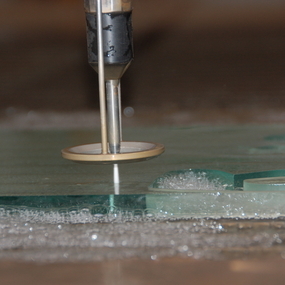
What is suitable for cutting limestone?
The water jet is best suited to cutting limestone optimally. Waterjet cutting is ideal for processing natural stone such as limestone, as it enables precise cuts without subjecting the material to thermal stress. In waterjet cutting, a high-pressure water jet, often with an abrasive additive, is directed at the material, creating a clean and precise cutting edge.
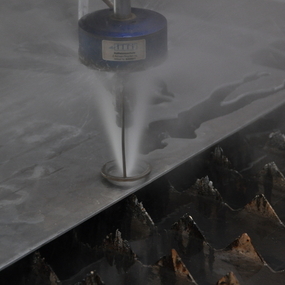
What is suitable for cutting marble?
Marble cutting requires precision and care to avoid damaging the material. The best technique for cutting marble is therefore waterjet cutting. This method uses a high-pressure water jet that is enriched with an abrasive, often sand or similar particles. The water jet is ejected under high pressure, creating a powerful cutting force that even hard marble cannot withstand.

What is suitable for cutting sandstone?
The best cutting technique for processing sandstone is waterjet cutting. This method is ideal for cutting sandstone as it enables a high level of precision while protecting the material, as no heat is generated during waterjet cutting. This prevents thermal stress and preserves the structural integrity of the stone material.
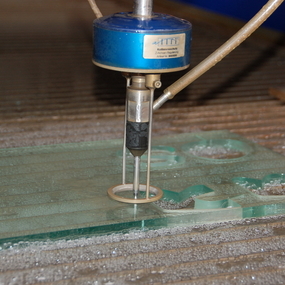
What is suitable for cutting titanium?
When it comes to cutting titanium, waterjet cutting is a particularly effective method. Waterjet cutting is a cold cutting technique that does not generate heat and therefore avoids the risk of deformation or structural changes to the material caused by heat, which can occur with titanium. Waterjet cutting produces precise cuts without burrs and requires minimal post-processing.

What is suitable for cutting travertine?
The cutting technique that is best suited to working with travertine - a porous, easy-to-work natural stone - is waterjet cutting. This method makes it possible to cut even the finest details into the travertine without damaging the material structure.
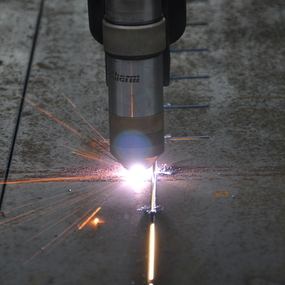
What is suitable for cutting zinc?
Zinc is a relatively soft metal that is best processed using plasma cutting technology. Plasma cutting is an excellent choice for cutting zinc because it allows precise cuts in a variety of metals.

What is suitable for cutting slate?
Waterjet cutting technology is the ideal choice for cutting slate. This process uses a high-pressure water jet, often together with an abrasive material, to produce precise cuts without thermally stressing the material. This is particularly important when cutting slate, as it is a brittle and layered material that can be easily damaged by high temperatures. The water jet cuts at a microscopic level, preventing cracks and ensuring a smooth cut surface.
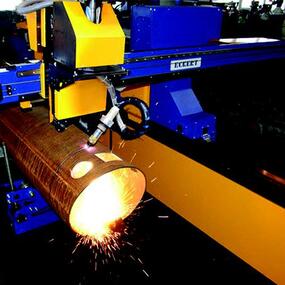
What is the function of bevelling?
Bevelling is an important process step in the manufacturing industry, especially in metal processing. Bevelling allows edges and surfaces to be precisely machined to enable ideal preparation for subsequent processes, such as welding.

How does thermal cutting work?
Thermal cutting is a process that uses heat to cut materials, particularly metals. The heat creates a melting or combustion reaction that makes the cut possible. There are different types of thermal cutting, including plasma, oxyfuel and laser cutting.

Functional principle and use of the acetylene burner in industry
What is an oxy-acetylene torch used for? The oxy-acetylene torch is one of the most popular tools for cutting metals with low alloy and carbon values. When cutting metallic material, it is brought to a temperature at which it burns in contact with the torch and emerges in the form of metal oxide. This effect is only possible by using appropriately designed torches that are able to mix oxygen with certain proportions of combustible gas.
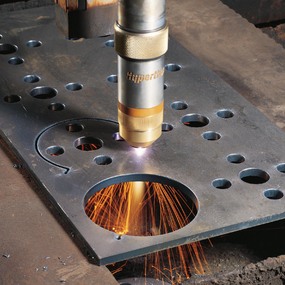
What should you know about plasma cutting?
Plasma cutting is undoubtedly the most popular CNC cutting technology. Taking advantage of Eckert's many years of experience, we have decided to create a collection of plasma cutting tips based on the problems we encounter on a daily basis. We hope that they will make the work of cutting machine operators easier and encourage them to take better care of the machine.
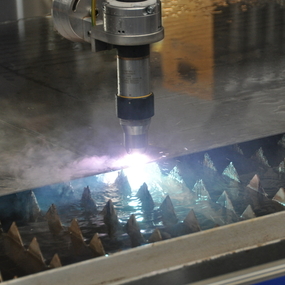
What is suitable for cutting iron?
The most efficient way to process iron is with plasma cutting technology. This technique uses an ionized gas jet to cut metal, which is directed at the material at high speed.

Plasma marking: what influences its quality?
Eckert CNC machines using plasma technology, are not only precise, fast and efficient when cutting conductive materials such as carbon steel, stainless steel or aluminum. They also offer the possibility of plasma marking using the same torch, which greatly improves the work when drawing lines or applying alphanumeric symbols.

Plasma - what exactly plasma cutting is all about
Plasma cutting is called a technique for cutting metal, the essence of which is to melt it and eject it from the cutting slot. The entire process is carried out by means of a special plasma electric arc, acting under the influence of high kinetic energy. In order for the cutting process to proceed properly, it is necessary to maintain a glowing arc between the material to be cut and the non-fusible electrode. A stream of compressed air passed through the glowing arc causes ionization, as well as high power density.
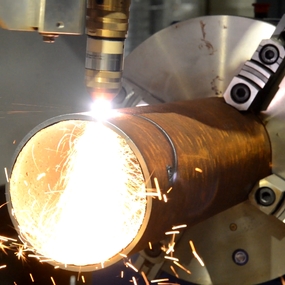
What thermal cutting is - definition
Thermal cutting as a definition refers to a technique in which heat is used to separate materials. The material is heated by heat until it reaches the melting or decomposition point. This results in a cut or separation point on the solid body of the material to be separated.




















